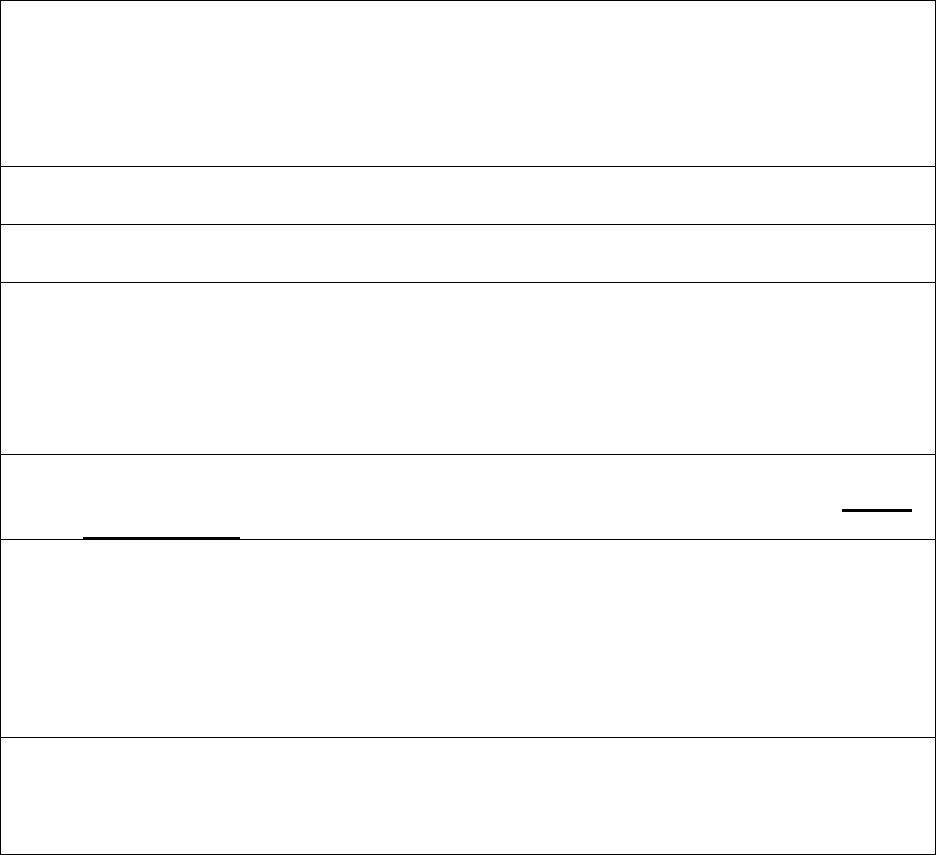
Writing Center
Workshop Lesson Plan
Using Counterarguments
Lesson Objectives:
1. To introduce students to the concept of a counterargument
2. To demonstrate for students the benefit of incorporating counterarguments into their
papers
3. To give students the opportunity to apply counterarguments to their own and other
arguments
Handouts:
• Student Notes
Technology:
• Projector for group activity or give as a separate handout
Introductory Activity: 5 minutes
• Introduce yourself and the lesson.
• Student introductions – name and class
• Write on the board: “Should students who get better grades receive more financial
aid?” Ask students to write down one plausible or believable reason a person might use
to support each side of the argument
Lecture Notes: 20-25 minutes
• Review the concept of argument using the Student Notes handout – write each bolded
and underlined term up on the board so students can copy them down as you go
Practice Activities: 25-30 minutes
• Project the adapted version of “Want to Smoke? Go to Hamburg” or give it to them as
a handout. Read through the passage with the students and review the questions at the
top of the passage with them
• Have the students return to the introductory activity. Ask them to write their own short
counterargument paragraph based on the plausible reasons they listed earlier. After 20
minutes, ask for volunteers to read their counterarguments
Closing Notes: 5 minutes
• Review main ideas of lesson
• Take any last questions
• Encourage students to come back to the Writing Center

Writing Center
Workshop Lesson: Using Counterargument
Lecture Notes
(Note: Answers to student notes are bolded AND underlined.)
• Argument
o An argument is the main claim made by an author or text. The goal of an argumentative
paper is to convince the audience that the main claim is true by providing evidence.
Example of a bad argument: Pollution is bad for the environment.
♦ Why is this a bad example?
It is too broad.
It is a fact. Therefore, it cannot be debated.
Example of a good argument: Thirty percent of the U.S. federal budget should
be spent on combating pollution.
♦ Why is this a good example?
It makes a specific claim (not too broad or vague).
It can be debated.
Evidence can be provided to support it or refute it.
• Counterargument
o A counterargument is an objection to an argument. Using counterarguments in your
own writing requires you to understand, and sometimes temporarily adopt, the
perspective of someone who disagrees with your argument. Addressing and refuting
counterarguments can improve the persuasiveness of your particular argument.
• The importance of counterarguments
o Counterarguments are important because they show that you are taking other
viewpoints into consideration. In addition, identifying problems in your own thought
can be a good persuasive strategy, which shows respect for your reader and
demonstrates to them that you are an open-minded thinker.
• Using a counterargument
o Where should counterarguments be introduced?
As a separate paragraph before your conclusion.
Toward the end of a body paragraph, after you have made your main point
but before your concluding or transition sentence.

o There are several ways to introduce counterarguments into your paper. The most
basic strategy is:
Introduce and explain the counterargument. [TEACHER’S NOTE: Who said
it? Are you using a direct quote or paraphrase? Are you using a boogeyman
phrase (ex. Some might say, Others might claim, One could object)?]
Understand and acknowledge the validity of the counterargument.
[TEACHER’S NOTE: Never bring up a counterargument unless you are able
to refute it. It will weaken your argument.]
Refute the counterargument by explaining how your main argument is still
true despite what the counterargument is saying.
o Use this template as a guide for writing a counterargument paragraph.
First sentence: “Some might say…” [Explain counterargument].
Second sentence: “This is valid because…” [Explain good points of
counterargument].
Third Sentence: “I still think the way I do because…” [Refute
counterargument and explain why your main argument is still valid].
• Example: Some might say that the government should not contribute
to combating pollution. This is valid because the government has lots
of budget challenges. I still think the way I do because the
government could cut money from something else in order to battle
pollution.
o Strategies for using counterarguments inside a body paragraph:
Ways to introduce counter-arguments:
• Many people [believe/argue/feel/think/etc.] that [state the counter-
argument here].
• It is often [thought/imagined/etc.] that [state the counter-argument
here].
• Supporters of this view might [believe/argue/feel/think/etc.] that [state
the counter-argument here].
Ways to respond to counter-arguments:
• What this argument [overlooks/fails to consider/does not take into
account] is [refute counterargument].
• This view [seems/looks/sounds/etc.]
[convincing/plausible/persuasive/etc.] at first, but ... [refute
counterargument].
•
While I concede that [acknowledge valid points of counterargument],
I would still argue that [refute counterargument].
Writing Center
Workshop Lesson: Using Counterargument
Student Notes
• Argument
o An argument is the _________________ made by an author or text. The goal of an
argumentative paper is to _______________ the audience that the ______________ is
true by providing ________________.
Example of a bad argument: Pollution is bad for the environment.
♦ Why is this a bad example?
It is too ______________.
It is a _______________. Therefore, it cannot be _____________.
Example of a good argument: Thirty percent of the U.S. federal budget should
be spent on combating pollution.
♦ Why is this a good example?
It makes a specific _______________ (not too ____________________).
It can be _______________.
___________________ can be provided to support it or refute it.
• Counterargument
o A counterargument is an __________________ to an argument. Using
counterarguments in your own writing requires you to understand, and sometimes
temporarily adopt, the ___________________ of someone who _________________
with your argument. Addressing a counterargument can improve the
________________ of your particular argument.
• The importance of counterarguments
o Counterarguments are important because they show that you are taking other
____________________ into consideration. In addition, identifying problems in your
own thought can be a good persuasive strategy, which shows respect for your reader
and shows them that you are an open-minded thinker.
• Using a counterargument
o Where should counterarguments be introduced?
As a ___________________ paragraph before your _________________.
Toward the end of a _______________ paragraph, after you have made your
___________________ but before your ______________ or
______________ sentence.
o There are several ways to introduce counterarguments into your paper. The most
basic strategy is:
_____________ and ____________ counterargument.
_________________ and ____________ the _____________ of the
counterargument.
_______________ the counterargument by ______________ how your main
argument is still true despite what the counterargument is saying.
o Use this template as a guide for writing a counterargument paragraph.
First sentence: _____________________________ [explain
counterargument]
Second sentence: ________________________________ [explain good
points of counterargument]
Third Sentence: _________________________________________ [refute
counterargument and explain why your main argument is still valid]
• Example: Some might say that the government should not
contribute to combating pollution. This is valid because the
government has lots of budget challenges. I still think the way I do
because the government could cut money from something else in
order to battle pollution.
o Strategies for using counterarguments inside a body paragraph:
Ways to introduce counter-arguments:
• Many people [believe/argue/feel/think/etc.] that [state the counter-
argument here].
• It is often [thought/imagined/etc.] that [state the counter-argument
here].
• Supporters of this view might [believe/argue/feel/think/etc.] that [state
the counter-argument here].
Ways to respond to counter-arguments:
• What this argument [overlooks/fails to consider/does not take into
account] is [refute counterargument].
• This view [seems/looks/sounds/etc.]
[convincing/plausible/persuasive/etc.] at first, but ... [refute
counterargument].
• While I concede that [acknowledge valid points of counterargument],
I would still argue that [refute counterargument].
Writing Center
Workshop Lesson: Using Counterargument
Group Activity
1. What is the main argument of the passage?
2. Identify the passage’s counterarguments.
3. Is the main argument more persuasive due to the addition of counterarguments?
4. In what ways could the author have better refuted the counterarguments?
I like a couple of cigarettes or a cigar with a drink, and like many other people, I only
smoke in bars or nightclubs. Now I can’t enjoy any of my old haunts. Bartenders who used to be
friends of mine have turned into cops, forcing me outside to shiver in the cold and curse under
my breath. It’s not fair! Smokers are being demonized and victimized.
Anita Smith, of the Cleaner Indoor Air organization, claims that people like me should
just “get over it,” because we “are in the minority.” While it is true that 70% of Chicagoans are
non-smokers, I thought this great city was a place where all kinds of minorities could thrive.
Others who disagree with me might argue that “Smoking kills.” As an occasional smoker with
otherwise healthy habits, I’ll take my chances. Health consciousness is important, but so is
freedom of choice.
Heavily adapted from Joe Jackson’s “Want to Smoke? Go to Hamburg” (from They Say, I Say)
